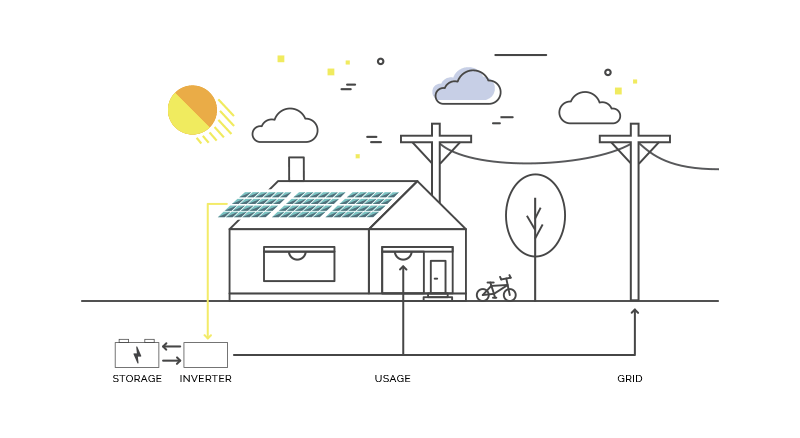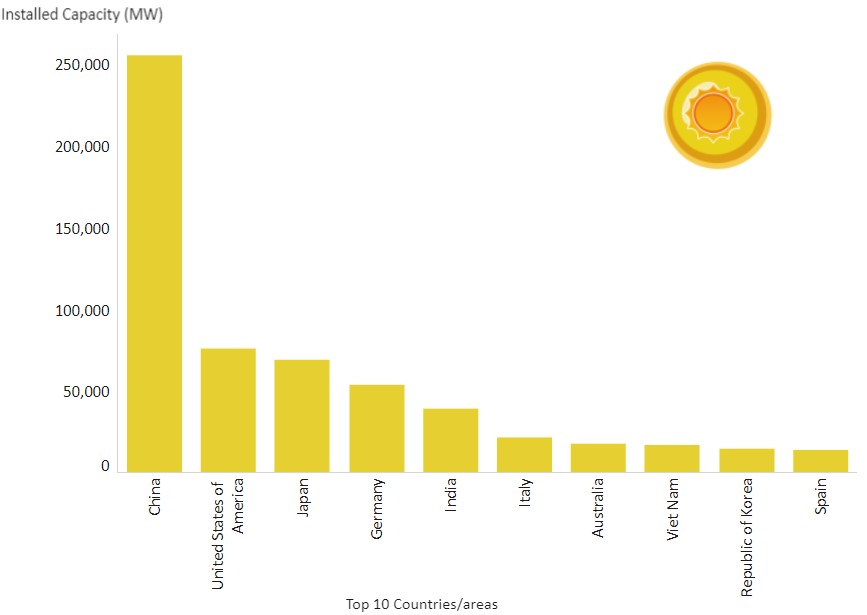In the modern world, solar energy is considered to be the most promising type of renewable energy and it has the greatest potential. Solar technology converts sunlight into electricity through photovoltaic (PV) panels or concentrate solar radiation through mirrors. Solar panels are used to generate electricity while solar collectors are used to supply heat and hot water by using solar radiation.
Solar energy technologies
Solar panels are light-sensitive semiconductor devices made up numerous layers framed in a common frame that convert solar energy into electricity using photocells.
Solar energy is produced in the form of direct current (DC) through solar panels, and then inverters are used to convert this energy into alternating current (AC) for integration into the network.

Concentrated Solar Power (CSP) uses mirrors to concentrate solar rays to generate electricity in large-scale power plants. A concentrated solar power plant usually features a field of mirrors that redirect rays to a tall thin tower.

Solar collectors are made out of a metal heat exchanger with channels inside that allow air, water, or other heat-transfer substances to pass through. There are several types of collectors: non-concentrating, concentrating, open and closed. Flat-plate collectors are the most common type of nonconcentrating collectors. Due to its efficiency, the use of solar collectors is better justified in decentralized energy systems.

Solar energy trends
Solar panels have a 30-year lifespan and come in a variety of colors based on the type of material used in their manufacture.
In recent years, the development of technology, the large-scale world economy, competitive supply chains and the improvement of practices have all contributed to a downward trend in production costs from renewable energy sources.
The price of electricity from industrial-scale solar PV fell by 82% between 2010 and 2020, while the Levelized Cost of Electricity (LCOE) fell by 7% between 2019 and 2020. As a result, the investment value of solar energy rose from 2010 to 2019.
 Source: IRENA
Source: IRENA
Power plants of various capacities covering an area of thousands of square meters on a commercial scale are installed by means of solar panels. Solar panels can be installed on the roofs of houses in a decentralized manner in mini-networks or in smaller configurations for personal use. Small, decentralized solar panels can be used to provide electricity to people who live far away from power lines in developing countries with solar energy resources.
Any solar array floating on a body of water with solar panels linked to a floating framework (pantone) that maintains them above the surface is known as Floating Solar Energy (also known as floating photovoltaic (FPV)). Floating solar installations are mainly installed in large, artificial bodies of water, such as lakes or reservoirs.

Solar energy worldwide
According to the International Renewable Energy Agency (IRENA), the world's total installed capacity of solar power plants was 714 GW (24.3%) in 2020, with 127 GW of newly commissioned solar power plants. As a result, solar power plants with a capacity of 49 GW and 15 GW were installed in China and the United States in 2020, the world's largest market for renewable energy sources.
The top five countries in terms of solar energy production are China (255 GW), the United States (75 GW), Japan (68 GW), Germany (53 GW), and India (39 GW).

According to the International Renewable Energy Agency's (IRENA) report "Future of Solar Photovoltaic - The Future of Solar PV", global solar energy capacity is expected to rise from 480 GWh in 2018 to about 8000 GWh by 2050. According to the analysis, solar energy will meet a quarter of worldwide electricity consumption by 2050, as new global markets emerge. At the same time, the analysis estimates that Asia would have more than 50% of the world's solar power installed by 2050.




